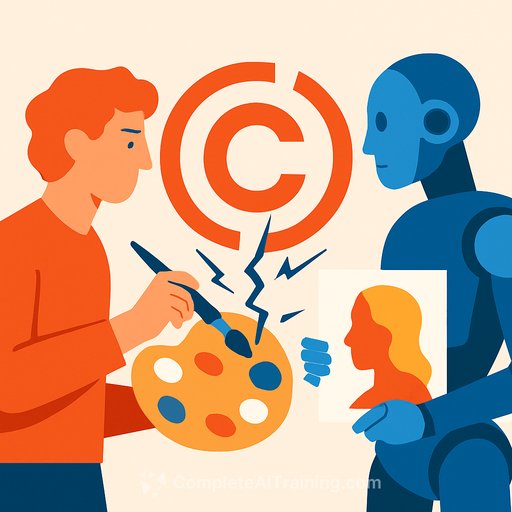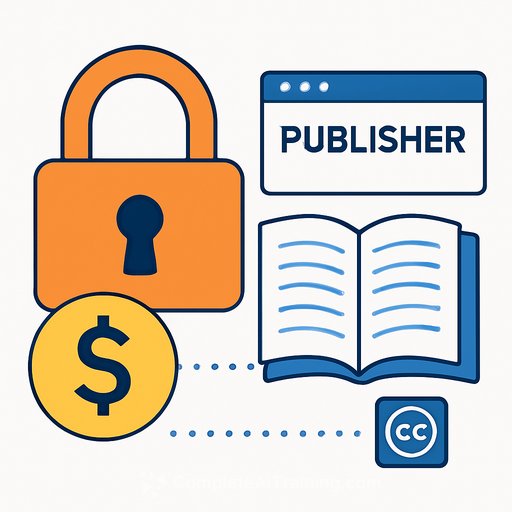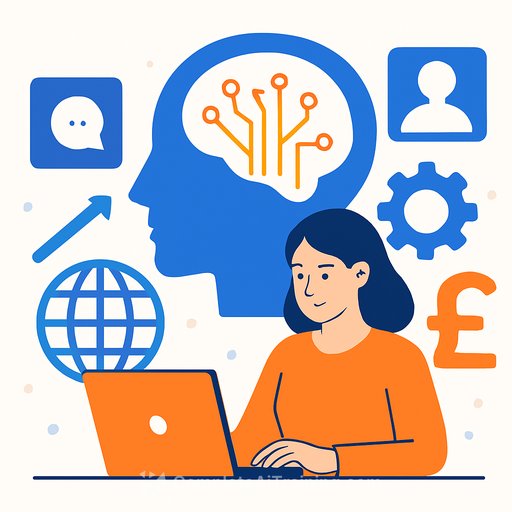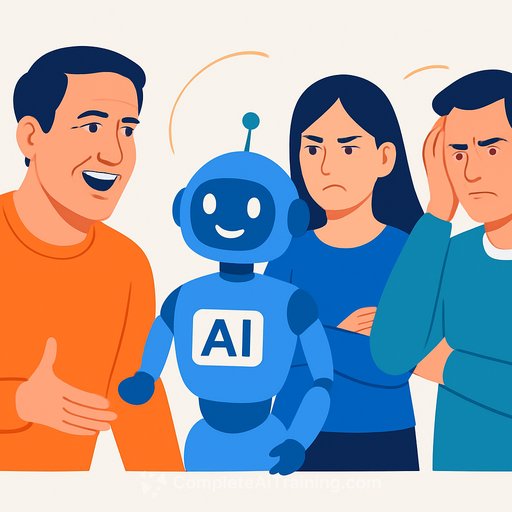Creatives vs AI: Copyright Is Not Charity
"It is copyright. It's not copy charity. It's not copy privilege. It's not copy indulgence. It's copyright. And our right has been parleyed away by ignorant people," said author Thomas Keneally.
Across art, design, music, film, and writing, creators are pushing back against unlicensed data scraping and style cloning. The goal is simple: consent, credit, and compensation.
What's at stake
- Your style can be mimicked in minutes, undercutting years of practice and reputation.
- Clients may assume "the model did it," erasing credit and lowering rates.
- Unlicensed training erodes licensing revenue and weakens your negotiating power.
- Provenance becomes murky, making it harder to prove authorship.
Protect your work this week
- Lock down your portfolio: Add "no AI training" language to site terms. Use robots.txt and meta tags to limit scraping. Keep high-res files behind client portals; show lower-res, watermarked previews publicly.
- Use provenance tools: Sign work with C2PA/Content Credentials where possible to attach creation data and editing history. See the Content Authenticity Initiative for how it works: contentauthenticity.org.
- Register and document: Register copyright where applicable, save dated source files, exports, and process shots. Keep a log for each project.
- Update contracts: Add a "No Training" clause and usage limits.
Sample clause: "Client may not use deliverables, or allow third parties to use deliverables, for training, fine-tuning, or improving AI systems without creator's written consent."
Add audit rights and damages for breach. - Offer clear licenses: Create two versions: Standard (no AI training) and Extended (with explicit terms and higher fees). Spell out redistribution, dataset use, and derivatives.
- Check platform settings: Where available, enable "NoAI/NoTraining" flags. Avoid uploading full-resolution files to public galleries.
- Join forces: Coordinate with peers, guilds, and agencies to standardize clauses and share legal resources.
- Educate clients: Add a one-pager that explains why unlicensed training harms creators and how compliant AI use benefits everyone.
If you use AI in your process
- Source responsibly: Prefer tools with licensed datasets or enterprise terms that forbid training on your inputs and outputs.
- Disclose use: Tell clients what's AI-assisted vs. handcrafted. Set expectations on rights, attribution, and data retention.
- Protect inputs: Don't upload client-confidential assets into public models. Use local or enterprise tools with data controls.
- Credit inspiration: If you reference living artists, seek permission or avoid direct style mimicry in commercial work.
Client-ready checklist
- Proposal includes "No AI training" line item and licensing options.
- Contract has audit rights, penalties, and clear usage limits.
- Deliverables include visible or invisible watermarking and Content Credentials where supported.
- Portfolio shows process and timestamps; originals are archived.
- Pricing reflects creative direction, iteration, and human judgment-not just files.
Policy to watch
- Copyright offices are defining how AI-generated and AI-assisted works are treated. For updates: U.S. Copyright Office: AI.
- Provenance standards (C2PA) are gaining adoption across cameras, creative apps, and platforms-use them early to build a paper trail.
A clear stance
Your work is your property. Treat it that way. Set terms. Document everything. Use tools that respect consent.
AI can assist, but it doesn't replace your taste, your eye, or your reputation. Protect those-and charge for them.
Skill up without giving up your rights
- Build marketable workflows that are human-led and AI-assisted, with clear IP boundaries.
- Explore practical courses and tools curated for creative roles: Courses by Job and AI Tools for Generative Art.
Your membership also unlocks:






